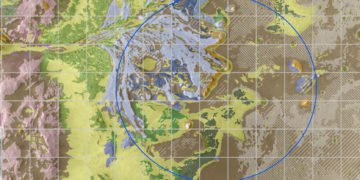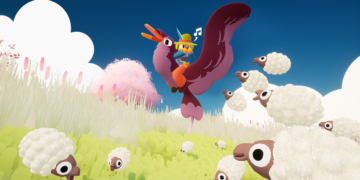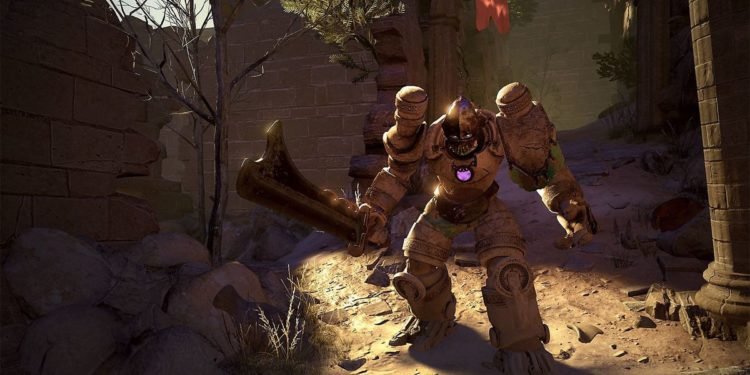If there’s an arrow in a video game pointing right, I’m going to start by running left.
I prioritize looking at any areas I think the developer isn’t pointing me toward when I play any kind of adventure game. The more obscure paths often hold secrets, collectibles, and sometimes even better equipment.
I knew something was wrong with Golem the first time I saw a path that looked like it might hide something cool, but I ignored it in order to get to the ending a little sooner. I fundamentally didn’t want to spend more time in Golem’s world than I had to. I was enjoying the world, the design of the environment, and the overall plot, but the physical act of playing was quickly making me nauseated.
Golem was originally announced as a PlayStation VR exclusive back in 2015, and has since been delayed multiple times. Its developer, Highwire Games, includes some impressive industry talent, but this first game may have been more than they were ready to tackle.
I play as Twine, a young child who was bedridden after an accident in which their older sister was seemingly killed while trying to recover treasure from a temple guarded by a magical barrier. The only beings who can pass through that barrier are giant stone golems, which can be controlled by magic. It’s this magic that allows Twine to direct the golems from bed. So you’re not just playing as a character; you’re playing as a character who is controlling a monster.
The basics are all there. The ideas of exploring beautiful and inspired architecture in VR and using motion controls to fight by swinging a sword are both appealing. The game’s characters, including Twine’s family members, are written well and brought to life by talented voice actors. The music, by original Halo and Destiny composer Marty O’Donnell, is appropriately epic. Swinging a sword with a Move controller feels mostly accurate, and the combat is fun … when it works correctly.
Fights in Golem are mostly one-on-one encounters with other sword-wielding golems, and I have to block incoming attacks with my own sword while looking for an opening to strike back. Being in VR adds an extra sense of danger and excitement, and my heart races as I wave my hands to block what look to be devastating attacks before landing the killing blow. But, like almost everything in Golem, the technology and basic design just isn’t able to deliver what’s necessary to play the game.
The core combat mechanic, blocking, is wildly inconsistent. During most fights, I would think I blocked a swing, only to take damage anyway. The angle at which I have to swing the sword to block successfully is incredibly narrow, making the battles frustrating. The motion tracking of my hand in 3D space is for the most part smooth and accurate, but I can find no setting in the options menu to make the blocking angle more forgiving, which leads to frequent deaths and backtracking.
Good luck trying to understand the inventory system, which is barely explained but becomes a major hurdle when a failed battle means that all my current gear is destroyed and must be replaced. The result is a confusing, frustrating mess, where a mistake in the hand tracking or combat can lead to too much wasted time or confusion over what went wrong.
Outside of the inconsistent but sometimes fun combat, things only get worse for Golem.
When VR doesn’t work
Golem is a nearly unplayable game, breaking multiple rules of VR game design, and suffering from bugs that make it just about impossible to play comfortably.
In Golem, you run around the world by holding down the trigger button, then leaning your body backward or forward to start moving, changing direction by tilting your head left or right while leaning. Because the vast majority of the game is spent walking around ruins, this means that you have to spend literally any time not in combat leaning forward, rather than being in a comfortable resting position.
This quickly gets uncomfortable, especially because of the small, but noticeable, extra weight of the VR headset that’s felt while leaning forward. If there are any other methods of controlling the game, I couldn’t find them in the menus.
Walking around a VR environment at all can be challenging for people new to VR — this is why so many games now default to warping from location to location — but mixing a more traditional walking system with leaning made me feel horrible, and it did the same to my partner when they tried to play.

Highwire Games
You do have the option to move forward and backward using an analog stick on a standard controller held in one of your hands. The game doesn’t explain this feature; we only know of it from communication sent along with the review code. Why Golem seems to hide so much from the player is a mystery — this option makes everything a little better albeit still not playable for extended sessions.
Using a DualShock controller is marginally more comfortable than leaning forward and backward, and it certainly allows for a more natural sitting position, but it comes with its own set of issues. If you’re pressing even slightly off-center from forward, you’ll start to strafe slightly as you walk — and you can still only rotate your character by looking while moving, so the stomach-lurching turns remain present.
With a controller, I had a much easier time staying the correct distance from an enemy, but I still found myself feeling queasy within a short time playing. If anything, the ability to move faster without having to lean forward exacerbates the issue with turning.
The rest of the comfort options are limited and poorly explained, with names that change inside and outside the playthrough — another strange oversight that feels almost hostile to the player.
This is far from my first time playing a VR game for extended periods. But I was never able to find a comfortable way to play Golem, and often had to remove the headset to take a break before I became even more ill.
There are multiple places in Golem where the design made the game physically uncomfortable to play. That includes moments spent riding in vehicles, like a horse-drawn cart that causes the view to jump around erratically, and stairs treated as inclines so what I saw never matched up with what I felt as I traveled up or down them. But the addition of a third environment in my peripheral vision was perhaps the most baffling design decision in the entire game.
This is due to Golem’s narrative structure. I’m a player, taking control of a person, who is taking control of the titular golems. So for most of the game, I’m seeing what the golems would see — until I quickly turn my head right or left. When that happens, I’m able to see Twin’s bedroom, which makes me feel as if I’m two levels deep in the fantasy. It’s not immersive; it’s confusing and nauseating. You can watch a clip of what this looks like below.

Highwire Games via Polygon
On top of this, Golem doesn’t offer a way to instantly reset your view in VR by holding down the options button, which is the standard for PSVR titles. Instead, I had to fumble around and discover for myself a combination of other buttons to hold down. That slowly drifted me back to a centered view but often left me nestled in the chest of my golem, looking forward but no longer at the right height.
I also twice experienced bugs where my headset’s look directions would invert, and I would begin to spin uncontrollably, with up becoming down, and left becoming right. This may sound kinda funny in print, but when you’re trying to focus on the experience in virtual reality, this sort of sudden change can lead to cold sweats, intense discomfort, and, on the extreme end, literal vomiting. When this happened, I had to quickly remove the headset to head off those ill effects.
I was able to play Golem for around five hours, across three days, and each session was cut short when I had to deal with my own motion sickness — a feeling I’ve never felt this acutely in any other VR experience I’ve played in the past few years, on any platform. I love playing games in VR, but this one beat me. I finally gave up, and I don’t regret doing so. No game is worth putting yourself through this much sickness to play.
Golem feels dated in many ways, with general VR best practices seemingly outpacing the game’s development. Everyone deals with VR slightly differently. For now, the best advice I can give you about Golem is to avoid it completely, but, if you must play, approach it with extreme caution.
And maybe with a bucket nearby.
Golem is now available for PlayStation VR. The game was reviewed using a final “retail” PS4 download code provided by Highwire Games. You can find additional information about Polygon’s ethics policy here.

















































